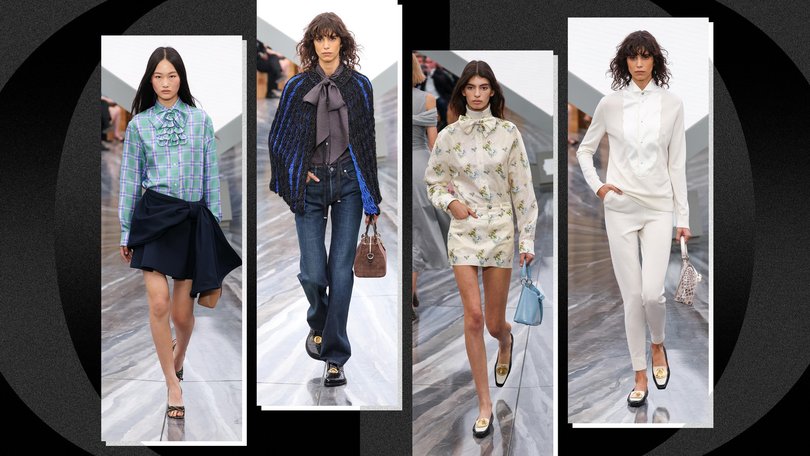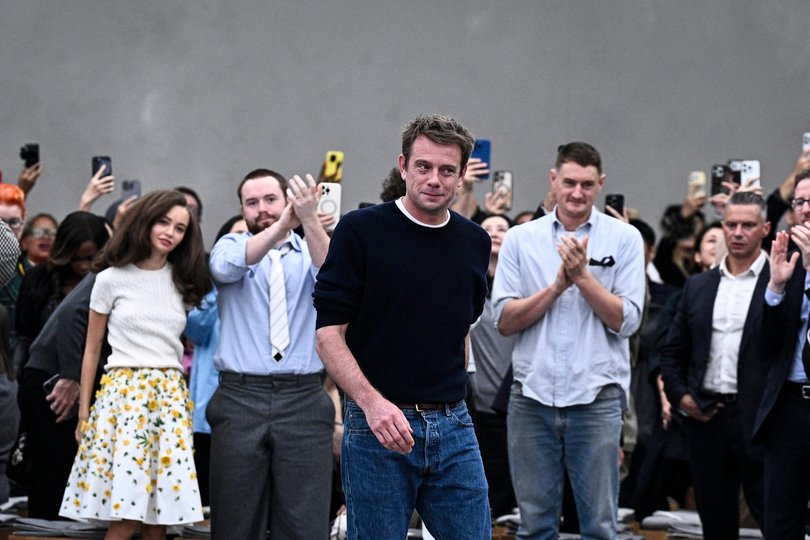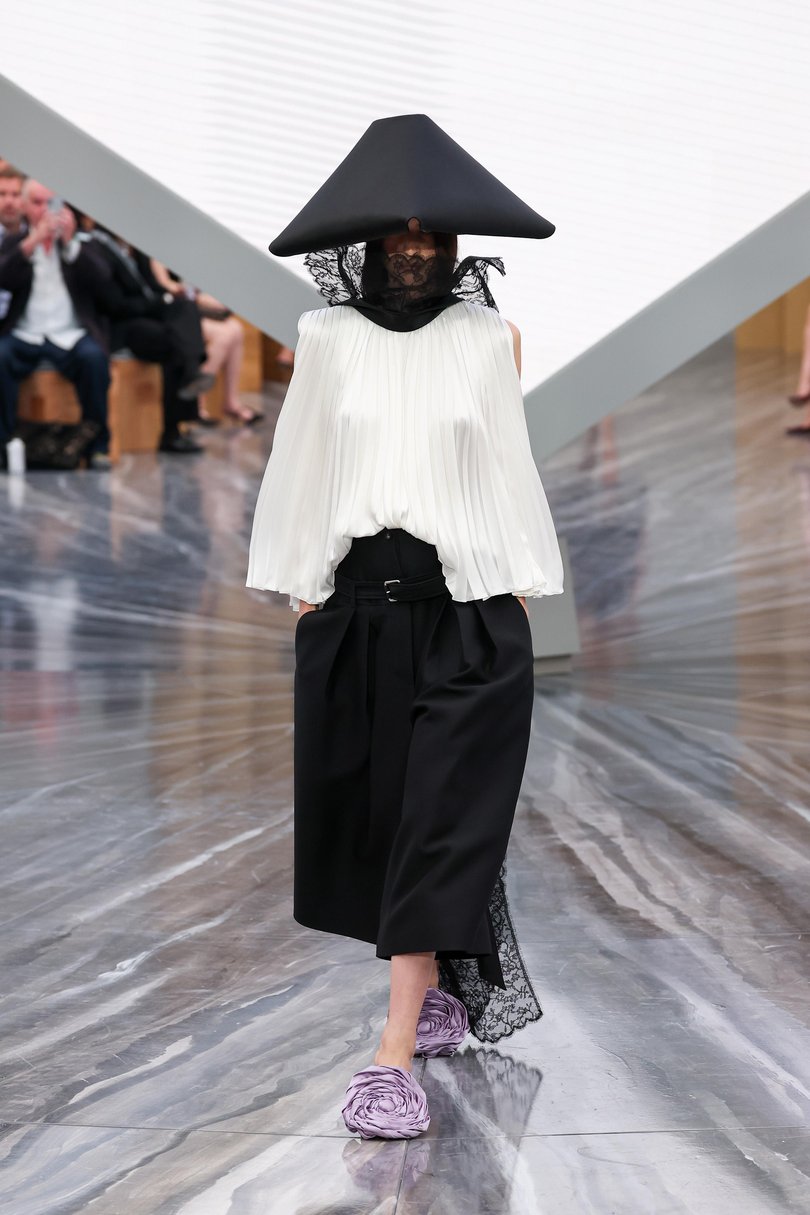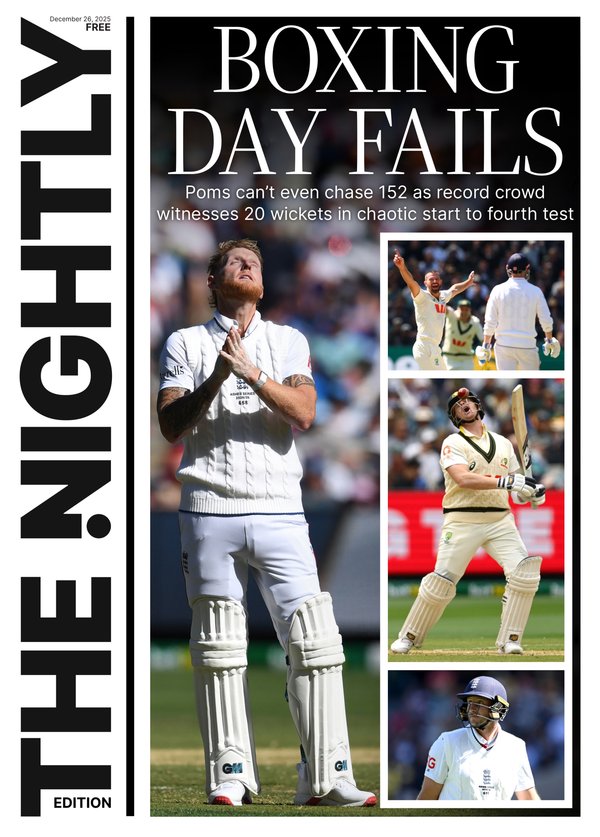THE WASHINGTON POST: Dior’s new designer celebrates glamour. He also wants to sell you clothes

In a year of nearly a dozen debuts at many of the world’s top luxury fashion brands, where no designer seems to have the job they had a year ago, Jonathan Anderson’s debut at Dior on Wednesday afternoon loomed the largest.
It was the Beatles on The Ed Sullivan Show, for people who think paying less than $US2,000 for a handbag is a good deal.
Dior is one of the most recognizable names in the world. It’s said to be the favourite of LVMH kingpin Bernard Arnault, whose stable also includes Louis Vuitton, Celine, Givenchy, Loewe, Fendi and many more. Dior stands for patrician glamour and propriety, even if you don’t know the story about how Christian Dior invented a corset jacket and big, fat skirt in 1947 that so moved the editor of Harper’s Bazaar, she crowned it “the New Look,” though it was largely a remix of late-19th-century ideas.
Sign up to The Nightly's newsletters.
Get the first look at the digital newspaper, curated daily stories and breaking headlines delivered to your inbox.
By continuing you agree to our Terms and Privacy Policy.Dior is the reason the hourglass defined the 1950s. And at a moment when traditional femininity has taken on a potent political charge - and first lady Melania Trump’s go-to look is a Dior skirt suit - it was widely understood that the mischievous Anderson, who spent a decade evolving Loewe from a respectable craft-oriented leather goods brand to a powerhouse of runway philosophizing, could make things very interesting.
Added to that pressure is the fact that luxury is in a moment of ambivalence right now, in part because too many brands produce the same products (ballet flats, elongated “east-west” bags) and slap their logos on them. There is a feeling of factory-made churn to so much that comes down runways.
You might have thought, then, that Anderson would go small, or intimate, or show the human side of Dior.
Instead, he did something much more thrilling: He embraced Dior’s hugeness as an exhilarating attribute. His show, much like his Dior in general - which had its debut menswear show in June, and already splashed a number of gowns onto red carpets this past month - is like Phil Spector’s Wall of Sound: all the instruments playing the catchiest and at times strangest hooks at their loudest. He is betting that going big or mass will not come across as selling out: that a designer of clothing that retails for upward of $4,000 can declare, “Denim miniskirts are back,” or “Men should all wear ties again,” and make people snap to attention.

An inverted pyramid towered at the centre of Wednesday’s show space, at the base of which was a grey Dior box, lid askew. (Director Luca Guadagnino, Anderson’s longtime friend and collaborator, created the set.) Anderson tasked Adam Curtis, the highly hip documentarian of our world’s confounding enormity, with making a short film that recounted the long history and cultural weight of Dior and its designers (John Galliano and Maria Grazia Chiuri and Raf Simons), its skirt suits and wasp-waisted gowns. The tone at first seemed touching and even a bit cowed: “DO YOU DARE ENTER THE HOUSE OF DIOR?” read the opening title cards in vintage-thriller typeface.
But as images went on, and Lana Del Rey’s Born to Die (oh my!) began to play, the film’s irreverent intention became apparent. Curtis clipped in a line of dialogue from Stage Fright, the Alfred Hitchcock thriller starring Marlene Dietrich, for which the star allegedly demanded costumes by Christian Dior as a condition of employment: “I didn’t destroy it. So long as I have the dress, I’m the one who decides how long the show will run!” Okay then. Suddenly the film rapidly reversed itself and imploded back into the Dior box on the floor. History - buh-bye!
The attention-grabbers of the collection were gowns and evening dresses - odd gauntlets thrown down to declare that glamour can look modern or bizarre, perplexing. The first dress, wrapped jersey on a wire crinoline, wobbled like a pastry or a sea creature (continuing the strange horror undercurrent of Curtis’ film: It’s alive!).
The dresses were a crazy feast: a sheer scrim with a bow at the back that skittered like a mating insect, a cap-sleeve floral gown that fell into flowing pinches of fabric at the hip, a beautifully destabilizing dress of wrapped and draped silk jersey. Silk pinwheels, petals and ribbons that seemed to rattle at the bars of their couture trapping cage. These are dresses for Jennifer Lawrence and Greta Lee to win Oscars in - provocations of silhouette and construction that will be controversial on social media and probably pay off for the woman with enough artistry to wear them.

More fascinating, though, were Anderson’s bluntly sellable, easily digestible choices - so unapologetic in their wearability that they made a statement. Anderson spent the past five years at Loewe making grand philosophical pronouncements with his runway collections, and here he was telling us that miniskirts and blazers are the next big thing.
There were the obvious plays like big beautiful bags and great shoes by Nina Christen, with whom he also worked at Loewe (where her viral moment came with her footwear trimmed with deflated balloons and anthuriums). But also: boot-cut and stovepipe jeans, and denim and leather miniskirts, shown with long ribbed capes; and starchy shirts in plaid and white, knotted with a bow tie at the collar.
He repeated several of these looks two or three times in different colours, as if to say, “Get it? Get it? You will get it!” (I thought, of all things, about Addison Rae’s song Diet Pepsi, whose verses exist as strings of gossamer between its epic chorus, which is just the same evocatively insipid two-and-a-half lines repeated over and over.) There was one weird hat (by Stephen Jones, a longtime Dior collaborator) that Anderson and his consigliere-stylist Benjamin Bruno plunked on top of looks seemingly at random, which gave otherwise normie outfits (a cocktail dress of dissipating ribbons or a blazer and denim miniskirt) a comic air of pretension.
Still: It’s no big struggle to convince customers to wear a nice shirt and a cute skirt.
And that seemed to suggest that there is indeed meaning behind these wearable clothes: that being big, or commercial, is its own fashion philosophy.
Whether big is better, or good at all, is a question every business is asking these days. Every other interesting brand in fashion right now - Alaia, The Row, Hermès in its own way - is small and making the case for shrinking fashion rather than inflating it like a balloon with room for endless helium.
But more broadly, the tensions between big and small are one of the animating themes of our times. Is a pop star like Charli XCX selling out by making a hit record after toiling in semi-obscurity? Why do we read 100 think pieces about the same three books? And more seriously: Should government be big and bold, or virtually nonexistent? Social media has so fractured our attention spans that very few things, possibly aside from pop music, are recognizable to everyone anymore - is that for the best? Or has it warped irreparably our sense of truth?
With jeans, capes and freaky shoes, Anderson wants to put fashion at the centre of popular culture in the way few designers have. Anderson could push his materials and techniques more; he’s got one of the finest ateliers in the world, after all, and he should stun as well as shock. But this was a good start.
If he can convince us, then who knows how far he can take it? Increasingly, it seems that designers are making pretend products that mean nothing except to a few hundred people who sit for 20 minutes, half-asleep, in cold European rooms and then post pics to Instagram. Anderson has Warholian ambition to make something “big” meaningful or at least intelligible out of Dior. Can fashion actually mean something to everyone?
© 2025 , The Washington Post.
